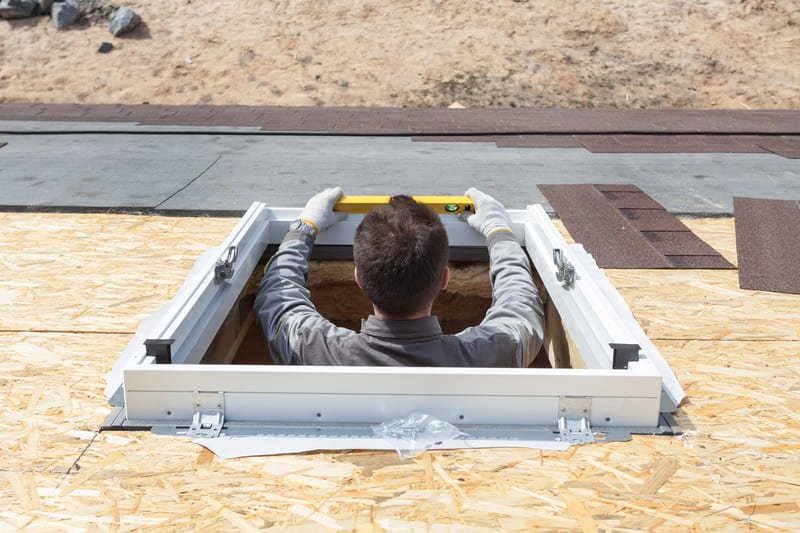
Saving energy means saving money, saving the environment, and even increasing your property value. A report from the EIA puts the average monthly electric bill in the United States for 2019 at $115.49. That’s a lot of money—and a lot of power. So, you probably want to know about ways to improve energy efficiency in your home, but where do you even start?
Home energy efficiency generally depends on two factors: the living habits of the homeowner and features built into the house itself. Living habits are a good band-aid fix, but remodeling your home provides a stronger foundation for better energy practices. Let’s dive in.
Inexpensive Living Habits for Improving Home Energy Efficiency
If you don’t have enough time or resources to remodel your entire house, there are easy ways to start saving energy now. Here are three ways to improve energy efficiency at home without emptying your wallet:
1. Unplug Unused Electronics. If you don’t need it, don’t use it. Household electronics always consume energy when they’re plugged in, even if they’re switched off—up to 75% of a device’s energy consumption can be from when you’re not using it. Unplugging computers, toasters, coffee makers, or other common items can conserve vast amounts of energy and money.
If you have the funds, consider investing in a smart power strip. These actually stop energy from being consumed by switched-off devices.
2. Replace Your Light Bulbs. LED and fluorescent light bulbs can be more expensive upfront than incandescents, but in the long run, they will save you money. They use 25-80% less energy and last three to 25 times longer than normal light bulbs.
3. Utilize Natural Elements. The natural world provides free (yes, free!) ventilation and lighting. Use it! During temperate days, shut off the A/C and open the windows. To warm or illuminate a room without using electricity, open the shades to let the sun in.
Let’s Build: 6 Keys to an Energy-Efficient Home
When your goals for energy conservation surpass simple living habits, it may be time to remodel the house. Below are six essential elements of an energy-efficient home:
1. Insulation. Insulation is integral to energy conservation. A rule of thumb is that any conditioned or heated space should be insulated. Make sure that the attic, basement, crawlspace, roof, and walls are not left out. Ducts should be insulated as well. Spray foam, foam board, or batt fiberglass are common types of insulation.
2. HVAC Upgrading. Heating, ventilation, and air conditioning are major contributors to home energy use. Heating alone accounts for around 40% of a household’s consumption—far more than air conditioning at 6%. Upgrading to more efficient systems, as well as ensuring the proper sealing and insulation of ventilation ducts that distribute hot and cool air through the house, is just one simple way to improve energy efficiency in your home.
3. Lighting and Daylighting. To optimize your use of light, consider installing skylights and a cool roof. Skylights allow natural light to penetrate a living space, cutting down on electricity usage. A cool roof, made of reflective material, reduces heat absorption from the sun.
4. Weatherizing. Cracks in vents, windows, and doors are the most common paths for air leaks. Weatherizing is the process of sealing those air leaks to reduce your energy usage and the cost of heating and cooling. This is an essential but easy step when building any home. You can also install energy-efficient windows.
5. Water Heating. Water heating makes up 14-18% of your utility bills. To improve energy efficiency, insulate your water heater and pipes, or simply use less hot water. Learn more about water heating in this infographic from the U.S. Department of Energy.
6. Efficient Appliances. Regular household appliances can make up 13% of household energy use, but investing in energy-efficient appliances reduces your usage immensely. Solar panels are expensive, but they can be a good way to generate sustainable energy. Consider a programmable thermostat as well to eliminate wasteful energy use—these can substitute for an HVAC upgrade.
Pre-Construction Considerations
Before you begin remodeling for home energy efficiency, get an energy assessment. You won’t be ready to build until you understand what your score means. Consider the type of home you are remodeling and understand some of the differences in an efficient design for each. Remember to go in a logical order (e.g., replace sealing and insulation before replacing inefficient equipment).
Ready to remodel your house? Plan ahead and order your roll-off dumpster rental to take care of all the construction debris. ASAP offers plenty of options to suit your needs.
